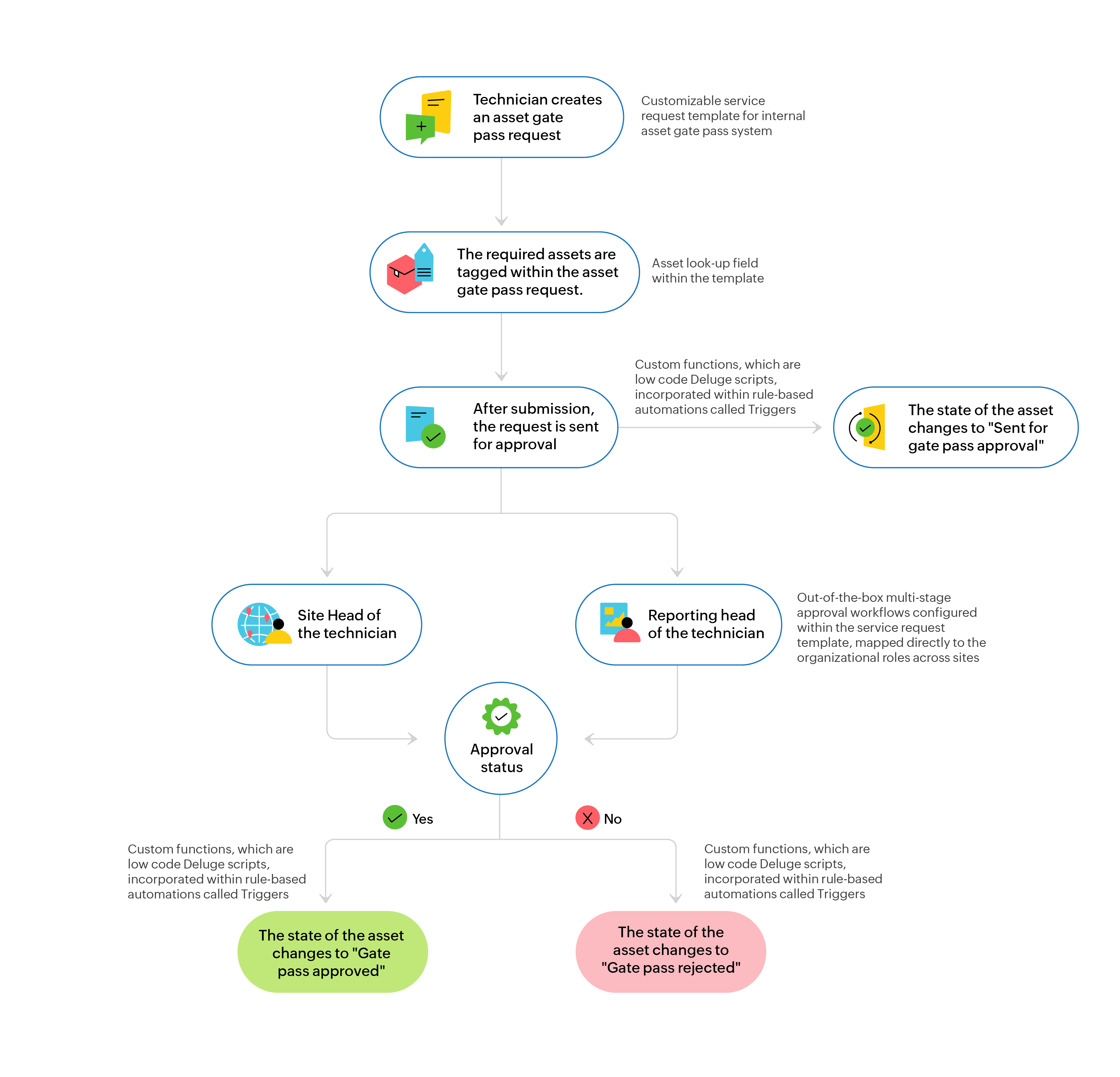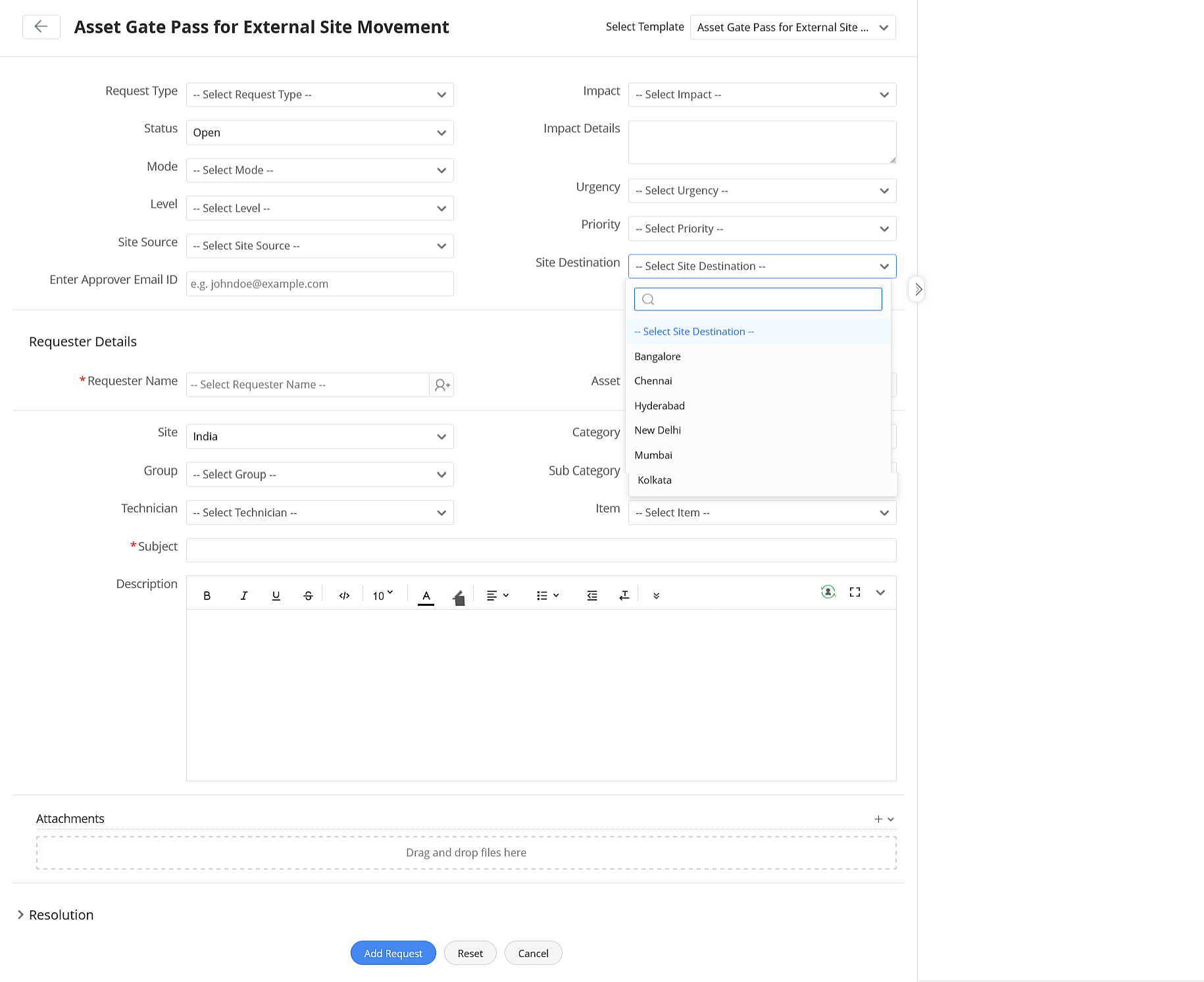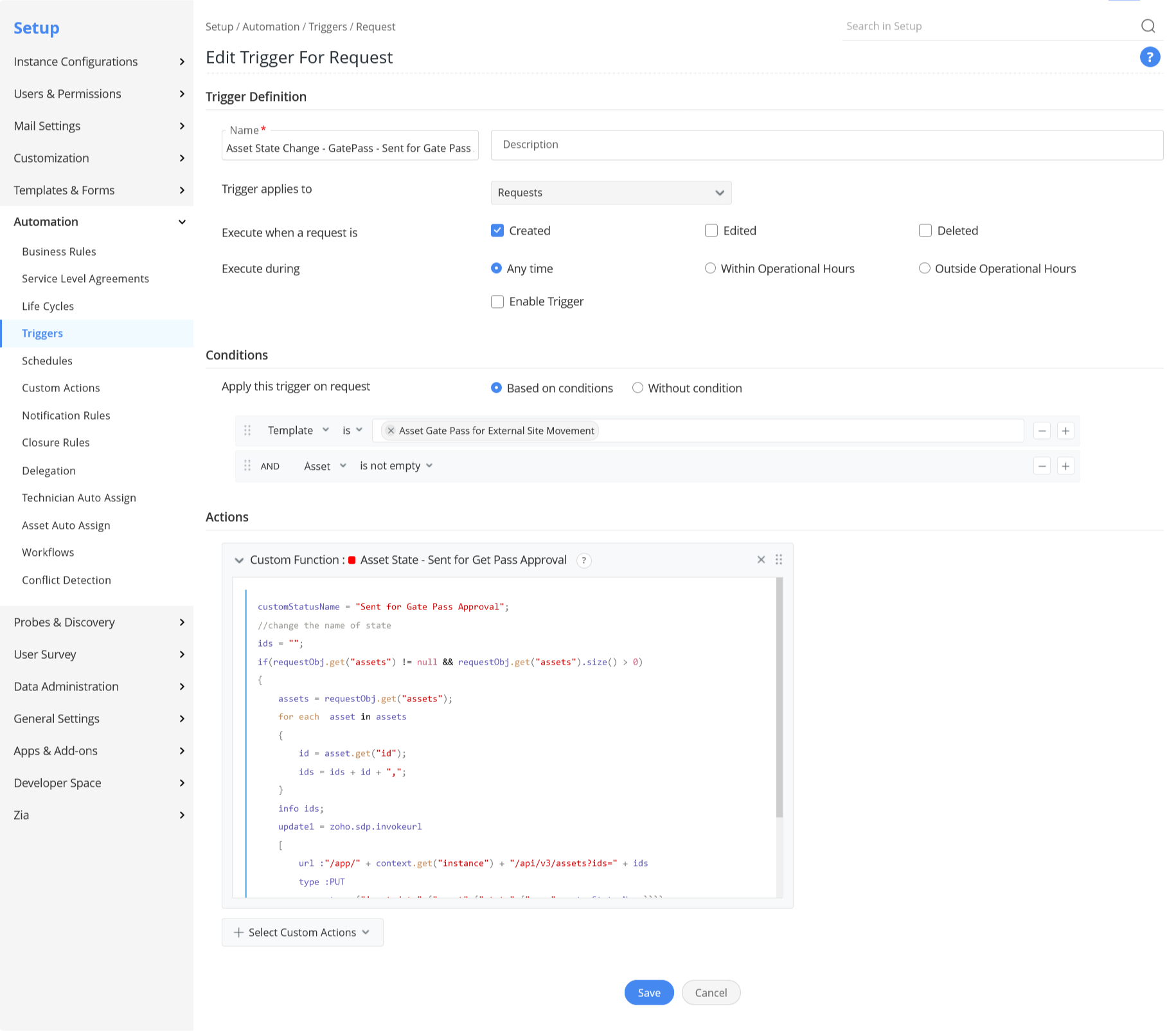About the company
Operating the country's largest last-mile delivery network, this leading Indian logistics company manages a complex and sprawling logistics ecosystem of 2.21 million square feet. The company completes more than 12 million deliveries every month that reach nearly 96% of the population in India.
Whether handling e-commerce logistics, warehouse management, or cross-border solutions, the company seamlessly integrates its operations at various scales. Therefore, it sought a versatile service management solution capable of addressing the breadth of its business ecosystem.
The need for an extensible platform that matched a layered IT landscape
The logistics company manages its extensive IT infrastructure across 540 sites through a hierarchical setup. The central IT team is headquartered in Bangalore, and the regional teams, distributed throughout India, manage specific sites in each region. The central IT team addresses complex IT issues, while regional and local IT teams handle simpler IT tickets.
Its service management goals include the efficient handling and movement of IT assets, streamlined ticket allocation, end-to-end governance of changes and other service operations. However, the effectiveness of its IT teams were constrained by limitations in its previous ITSM tool, Symphony AI Summit.
The company's IT teams encountered hurdles with multiple loosely-coupled products from a single vendor. Symphony Summit AI, with its siloed IT asset management capabilities, obstructed the smooth flow of IT asset information to their service desk console. This inadequate integration obscured broader context, hindering the teams' service operations. The inability to track IT assets accurately and deficient approval mechanisms resulted in chaotic movement of IT assets across sites. In addition, the manual allocation of tickets to designated teams led to inaccurate assignments, leading to delays in ticket resolution.
To top it all, a non-intuitive user interface resulted in subpar user experiences, while primitive reporting capabilities left them without clear insights into operational performance. Grappling with these challenges, Symphony AI Summit could not deliver the frictionless service experiences the logistics company required.
The search for the right service management solution
The company's IT teams began searching for a unified service management solution that could scale effortlessly and accommodate its magnitude of operations. They required a fitting combination of automations and workflow capabilities to design a comprehensive asset gate pass system. With service operations across a vast network of 540 sites, the IT teams sought robust low-code capabilities to ensure meticulous ticket administration tailored to their requirements.They also aimed to devise unique workflows to readily govern different types of changes.
ManageEngine ServiceDesk Plus checked off all of these boxes with its flexible ITSM capabilities. The logistics company's IT teams were easily about to leverage out-of-the-box capabilities like custom templates, rule-based automations like triggers, and visual change workflows, along with contextual integrations with ManageEngine's IT solutions. Building on the platform's flexible configurations, the IT teams utilized low-code automations like custom scripts to adapt functionality to their unique requirements. With the right synthesis of out-of-box capabilities and detailed customizations in ServiceDesk Plus, the company's IT teams overcame the limitations stemming from Symphony AI Summit.
Powering the accurate discovery and orderly movement of IT assets
Discovering IT assets across sub-networks
To overcome challenges posed by intricate sub-networks within its IT landscape, the company employs Endpoint Central Cloud, ManageEngine's UEM solution, for comprehensive IT asset discovery. Capitalizing on the native IT integration capabilities, the IT team effortlessly imported in-depth IT asset information into ServiceDesk Plus Cloud. The inherent synergy between ITAM and other ITSM practices in ServiceDesk Plus provides a holistic understanding of IT assets, significantly expediting ticket resolution.
Building a reliable asset gate pass system
The logistics company transferred IT assets within and between specific sites after obtaining approvals from various stakeholders. For internal transfers, approvals were sought from the head of the technician's site and the technician's reporting manager. External transfers between any of the 24 different sites required approvals from the head of site at both the source and destination sites, along with an additional layer of approval. Apart from this multi-layered approval process, the company wanted to simultaneously track the state of IT assets as they were moved from one site to another.

Handling the movement of IT assets within a site
Governing the movement of IT assets between different sites
ServiceDesk Plus, equipped with prebuilt capabilities and low-code customizations, helped the logistics company build out the asset gate pass system it envisioned. It leveraged custom service request templates to collect precise information before beginning these transfers. IT teams crafted templates, each exclusive for internal and external asset transfers, utilizing an intuitive drag-and-drop canvas. Additional custom fields were added to the templates, incorporating more contextual data relating to sites and the assets. In particular, the IT assets are tagged within the request itself using the asset look-up field. For external transfers, source and destination sites are listed within the request template, while an email ID field captured the corresponding stakeholder's email ID for securing additional approval.

Asset gate pass template customized for external transfer of IT assets
After the technician submitted the request with necessary details, approvals are sought from various stakeholders to initiate the process. For internal transfers, approvals were configured using the multi-stage approval workflows available out of the box within the service request template. These approvals were directly mapped to site-based organizational roles, such as "Site Head of the Technician" and the "Reporting Head of the Technician", overcoming internal approval bottlenecks.
To accelerate approvals for external transfers, the company utilized low-code automations like custom functions to build their unique approval process. Custom functions, which are low-code scripts, are written in Deluge, ManageEngine's own proprietary scripting language. These custom functions were incorporated within triggers, which are condition-based actions, to secure approvals from the site heads at the source and the destination, along with a designated approval user.

Custom functions to secure approvals from various stakeholders for the external transfer of IT assets
Simultaneously, the company intended to track the state of the IT assets based on the approval status. By using low-code custom scripts, they assigned a custom asset state automatically. Moreover, such assignments were automated using triggers. Once the technician submitted the request, the asset state was changed to "Sent for gate pass approval". Likewise, asset states like "Gate pass approved" or "Gate pass rejected" were given according to the approval status of the request. ServiceDesk Plus made it easy for the logistics company to simplify and set right its complex IT asset logistics across the network.

Low-code scripts to assign a custom asset state automatically based on the approval status
Consolidating the administration of tickets
Standardizing ticket management across a colossal network
As an organization with operations spanning 540 locations, the logistic company's hub-and-spoke design created a complex, layered IT infrastructure. Given the immense scale of this setup, technician groups, including those dedicated to specific disciplines like ITAM, were distributed across every site in their extensive network. Additionally, the central IT team encountered a significant hurdle: the inability to access tickets from various locations to address complex IT issues. Hence, the dual objective was to establish a system that:
- seamlessly routes tickets to designated teams at each of the 540 sites automatically
- eliminates site-specific barriers, enabling the central IT team in Bangalore to resolve complex IT issues at any location
Achieving these objectives was made possible through simple scripts in ServiceDesk Plus. By embedding these low-code scripts into triggers, they established a coherent ticket administration process. This approach delegated tickets automatically to the targeted IT teams, especially ITAM group, spanning the 540 unique locations.
Rationalizing the employee onboarding and offboarding process
Harnessing the integration of ServiceDesk Plus and ADManager Plus, ManageEngine's automated IAM solution, the logistics company refined its onboarding and offboarding process. This integration empowered them to perform crucial actions such as creating, deleting, enabling, disabling AD users, and resetting passwords directly within each request inside ServiceDesk Plus. By centralizing these tasks within the service desk console, it improved the efficiency of its user management processes rather than juggling multiple windows.
Systematizing change governance with visual workflows
The logistics company faced challenges with the chaotic implementation of changes in its IT environment, ranging from server upgrades to firewall modifications. ServiceDesk Plus helped exert greater control over changes through multi-stage, visual change workflows. It customized these workflows to govern diverse change types, including standard, major, minor, and emergency changes.
The IT team automated essential tasks such as approvals and notifications within the workflow itself. For major changes, the IT team configured approval nodes in the workflow to ensure timely approvals from CABs, introducing crucial checks and balances. Additionally, when handling emergency changes, notification nodes were utilized to alert key stakeholders, such as the head of the department throughout the change process.
To establish and enforce a well-defined schedule for changes, the company embedded custom scripts within triggers, to ensure that a mandatory end date was scheduled for each change. By automating this, the company reduced errors that might arise from oversights in scheduling change implementations.
The right combination of prebuilt capabilities and bespoke extensibility
Whether supervising movement of IT assets, disentangling the administration of tickets or governing various changes across a mammoth network of 540 sites, ServiceDesk Plus helped the logistics company built a frictionless service engine. By combining out-of-the-box capabilities with last-mile customizations the correct way, the platform met its diverse requirements. ServiceDesk Plus' contextual integrations with ManageEngine's suite of IT solutions like Endpoint Central Cloud and AD Manager Plus, enabled the company to centralize its service operations on a single platform. Its journey with ServiceDesk Plus exemplifies the potential of any organization to reach peak efficiency by tapping into the extensive service management capabilities of a unified ITSM platform.
